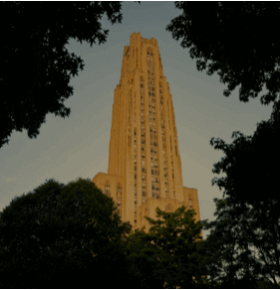
Subscribe to Pittwire Today
Get the most interesting and important stories from the University of Pittsburgh.This Pitt researcher is using his own experience to help autistic students thrive on campus

Twenty-five years ago, when Brett Ranon Nachman was diagnosed with autism, the disorder was regarded as a medical condition that needed to be treated or cured. Today, as an assistant professor of higher education and researcher at Pitt’s School of Education, Nachman sees it differently.
For Nachman and the more than 1,000 students he and his colleagues have surveyed, autism isn’t a condition to overcome, but an identity to embrace.
“Describing autism as a medical problem is the antithesis of where so many of us are now in terms of our research,” Nachman says. “We're thinking about how we support students in ways that are not unlike neurotypical students but still consider the unique strengths and challenges that are associated with autism.”
Nachman’s realization came during his own college days, when he saw that processing and communicating information differently than his peers didn’t make him wrong, and it certainly didn’t preclude him from success.
Believing his passion and personal experience could augment what he calls the “relatively unpaved” landscape of autism research involving college students, Nachman made it the centerpiece of his research. For nearly 10 years, he’s been investigating how students with autism navigate their college careers and how universities can better support them.
Nachman serves as co-PI of Postsecondary Education: Autistic Collegians’ Experiences of Success (PEACES), a national study of autistic college student success that has been funded by several grants, including a $500,000 Spencer Foundation Large Research Grant. Drawing, in part, on the contacts he’s made working as the director of research for the College Autism Network, Nachman — along with co-PI Bradley E. Cox of Michigan State University and other colleagues — has assembled one of the country’s largest samples of autistic college students. Their responses to surveys, along with dozens of interviews and photovoice submissions, are helping Nachman and his team generate important insights about the community and follow more than a few hundred students’ journeys over multiple years.
Their goal is to understand students’ versions of success and not impose any external notions of achievement, so the survey questions focus on personal experience and revolve around psychology, identity, academics, community and employment.
One of the most exciting and unanticipated takeaways thus far comes from the community tenet — the importance of social outlets.
“It might surprise people who don't know much about the autism community because there’s, unfortunately, a stigmatization that autistic college students are not always social or focused on making friendships, that they're isolated,” Nachman says. “That couldn't be further from the truth.”
In fact, students surveyed reported the cultivation of friendships and community as crucial to their success on campus because it leant a strong sense of support.
But Nachman believes the true benefit of this work doesn’t necessarily live in the data collected but the way responses inform our understanding of and contextualize the lived experiences of autistic college students.
“I feel a great deal of responsibility in gathering and helping tell other people's stories,” Nachman says.
Not all autistic students have the same experiences, just as all neurotypical students do not, and Nachman believes his and his colleagues’ work offers a more nuanced picture of autism and the community of learners who share a diagnosis but have many different abilities and experiences.
“If I have the opportunity to elevate folks who may not have had the same types of opportunities and resources as myself, and if we honor them in ways that feel authentic and rich, that's what's really important,” Nachman says. “When people can see themselves, it can make a world of difference.”
Photography by Tom Altany

